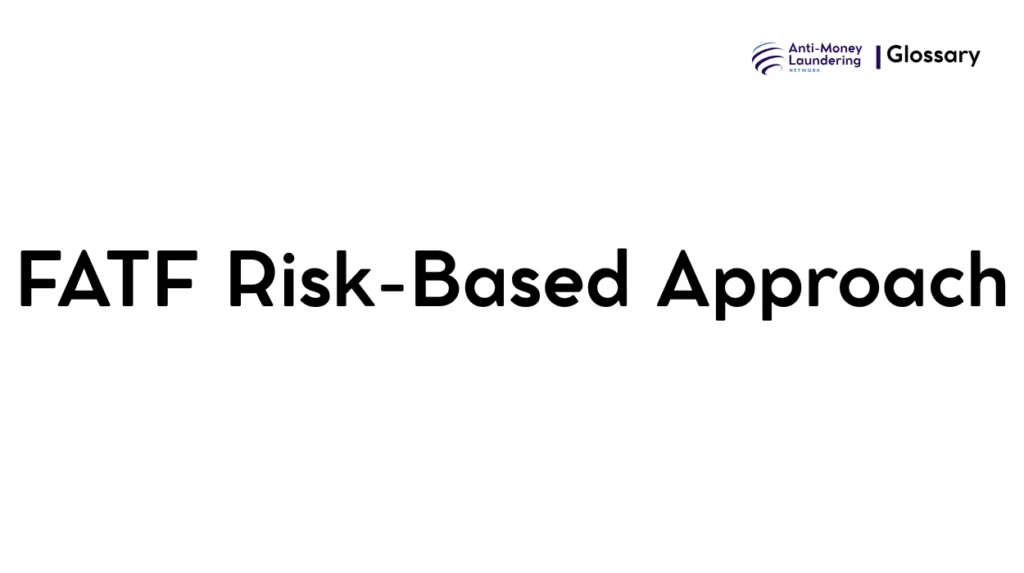Definition
The Financial Action Task Force (FATF) Risk-Based Approach (RBA) to Anti-Money Laundering (AML) is a strategic framework requiring countries, financial institutions, and other obligated entities to identify, assess, and understand the risks of money laundering and terrorist financing (ML/TF) they face. Institutions must then apply AML measures proportionate to the level of these risks to mitigate them effectively. This approach moves away from a one-size-fits-all model and instead prioritizes resources based on actual risk levels, enhancing operational efficiency and regulatory compliance.
Purpose and Regulatory Basis
The Risk-Based Approach serves as the foundation for effective AML efforts worldwide. It enables targeted use of resources to address the most significant ML/TF threats. This approach is mandated by key regulations and standards, including:
- FATF Recommendations: Since 2012, FATF has emphasized RBA as an essential basis for AML/CFT frameworks, making it a prerequisite for compliance in all member countries.
- USA PATRIOT Act: Incorporates risk-based due diligence requirements for financial institutions.
- EU Anti-Money Laundering Directives (AMLD): Require member states to adopt RBA measures tailored to national risk assessments.
By aligning national laws and institutional policies with FATF standards, countries and organizations strengthen their ability to detect, prevent, and prosecute ML/TF.
When and How it Applies
The RBA applies continuously across the lifecycle of customer relationships and transactions. Practical triggers include:
- Onboarding new customers (due diligence and risk profiling).
- Monitoring ongoing transactions for suspicious activity.
- Updating controls upon significant changes in products, services, or jurisdictions.
For example, a bank assessing a customer from a high-risk jurisdiction with complex ownership is expected to apply enhanced due diligence measures compared to a low-risk retail client.
Types or Variants
While RBA is a concept, its application varies by context:
- Customer Risk Assessment: Classifying customers as low, medium, or high risk based on factors like geography, occupation, or transaction behavior.
- Product/Service Risk: Some financial products (e.g., private banking, anonymous accounts) inherently carry higher risks.
- Geographical Risk: Based on country-level ML/TF threat analyses.
- Transactional Risk: Transactions exceeding thresholds, cross-border flows, or involving unusual patterns.
Institutions combine these assessments to tailor their controls and monitoring.
Procedures and Implementation
To comply with FATF RBA, institutions generally follow these steps:
- Risk Identification: Gather information on customers, products, services, and jurisdictions.
- Risk Assessment: Evaluate the severity and likelihood of ML/TF risks using internal and external data.
- Risk Mitigation: Design controls proportionate to identified risks, such as enhanced due diligence, stricter transaction monitoring, or product restrictions.
- Documentation: Maintain clear records of risk assessments and decisions.
- Ongoing Monitoring and Review: Continuously update risk profiles and controls as circumstances change.
- Training and Governance: Ensure staff are trained in detecting risks and that senior management oversees the RBA implementation.
Technology such as automated transaction monitoring systems and data analytics play a critical role in effective implementation.
Impact on Customers/Clients
From the customer’s perspective, the RBA means:
- More rigorous verification and documentation for those assessed as higher-risk.
- Potential delays or restrictions on certain transactions or services.
- Ongoing monitoring of account activity.
However, the approach also helps reduce unnecessary burdens on low-risk customers by avoiding overly stringent checks where risks are minimal.
Duration, Review, and Resolution
Risk assessments and controls under the RBA are not one-time exercises. They require:
- Regular reviews: Periodic reassessment of customer risk profiles and AML controls to adapt to new threats and changes in customer behavior or product offerings.
- Responsive actions: Prompt adjustment of risk mitigation measures when higher risks emerge.
- Resolution processes: Clear escalation and reporting protocols when suspicious activity is detected.
Reporting and Compliance Duties
Institutions must maintain comprehensive records to demonstrate compliance with RBA requirements. This includes documenting:
- Risk assessments and methodologies.
- Customer due diligence (CDD) procedures.
- Transaction monitoring outcomes.
- Suspicious activity reports (SARs) filed with relevant authorities.
Failure to comply can result in significant penalties, regulatory sanctions, and reputational damage.
Related AML Terms
The FATF Risk-Based Approach interconnects with several AML concepts, including:
- Customer Due Diligence (CDD) and Enhanced Due Diligence (EDD)
- Know Your Customer (KYC) procedures
- **Suspicious Transaction Reporting (STR)
- Politically Exposed Persons (PEPs) and sanction screening
Understanding these helps institutions build a holistic AML program.
Challenges and Best Practices
Common challenges include:
- Difficulty in accurately assessing risks due to incomplete or inaccurate information.
- Balancing regulatory expectations with operational realities.
- Maintaining up-to-date systems and staff training.
Best practices to overcome these include:
- Leveraging technology analytics for better risk detection.
- Ongoing training and awareness programs.
- Strong governance and clear policies.
- Collaboration with regulators and information sharing.
Recent Developments
Emerging trends shaping the RBA include:
- Use of artificial intelligence and machine learning to enhance risk detection.
- Enhanced focus on virtual assets and cryptocurrencies due to their unique risks.
- Increasing global regulatory coordination to harmonize RBA expectations.
- Adaptation of RBA frameworks to cover new sectors, such as decentralized finance (DeFi) and non-traditional payment providers.
Summary
The FATF Risk-Based Approach is a critical, dynamic, and globally endorsed framework that ensures AML efforts are commensurate with the actual ML/TF risks faced by institutions. It empowers financial entities to allocate resources efficiently, strengthen detection capabilities, and maintain regulatory compliance. Mastery and proper implementation of the RBA are indispensable for protecting the integrity of the financial system and fostering global cooperation against money laundering and terrorist financing.

